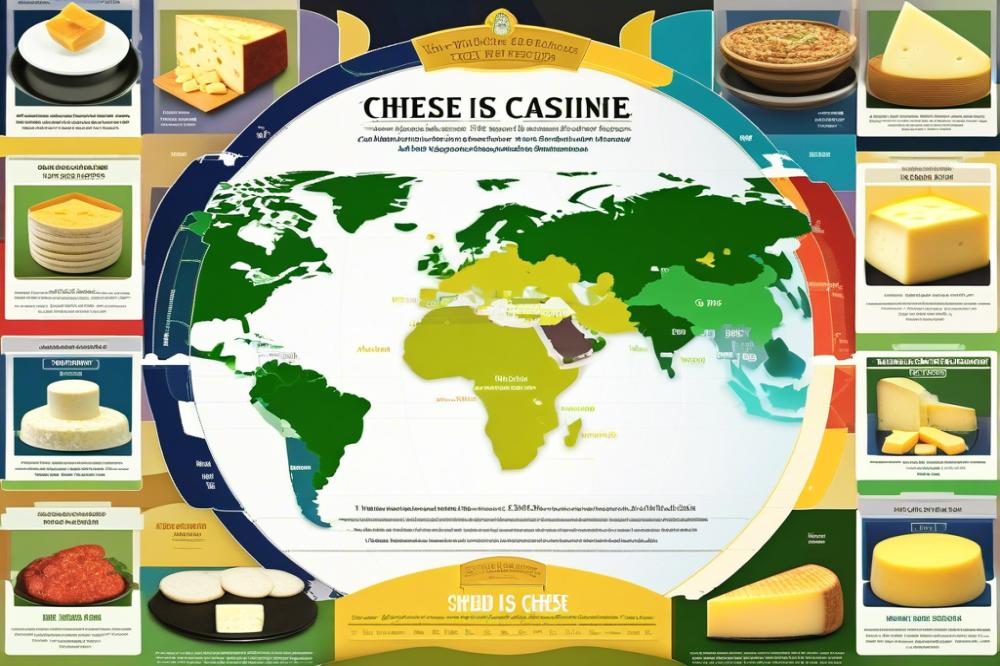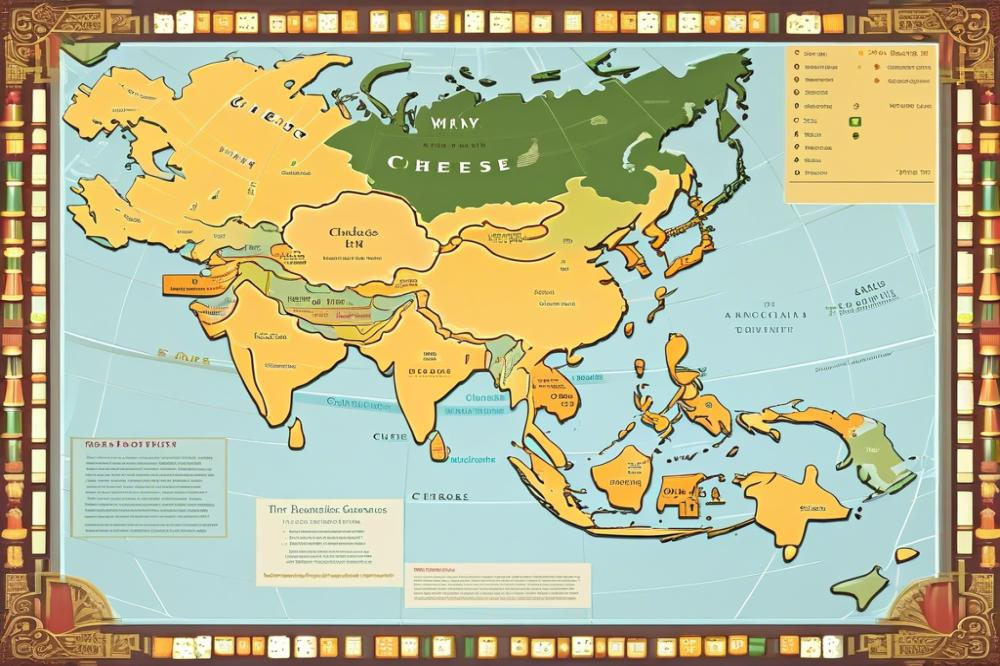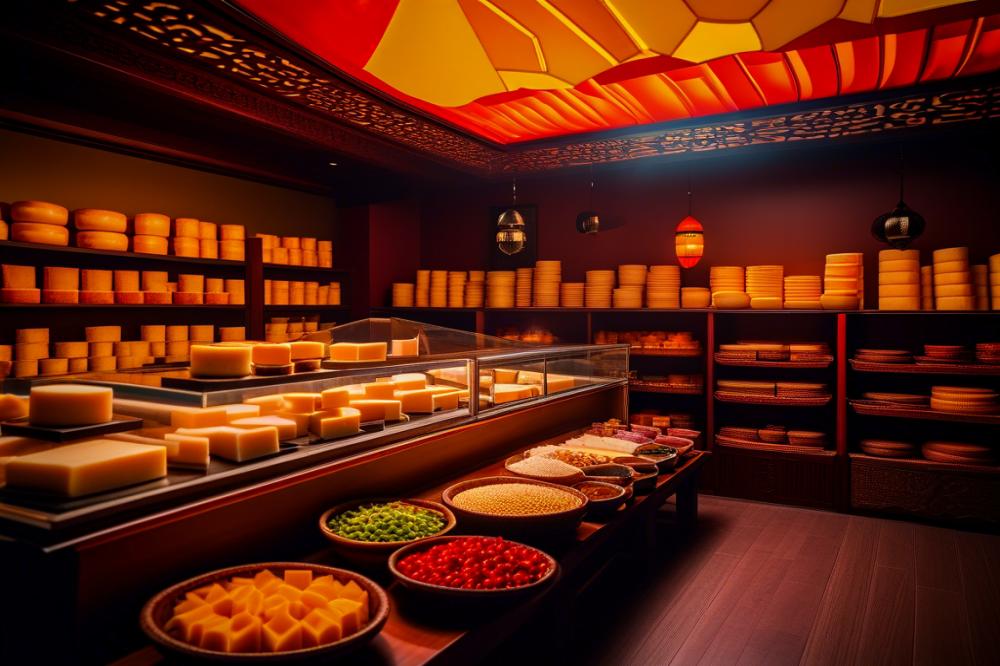Understanding cheese in Global Cuisines
cheese is a staple in many cultures around the world. From the rich flavors of French Brie to the sharpness of aged Cheddar, it plays a significant role in countless dishes. Various civilizations have embraced this dairy product, creating diverse varieties that speak to their local tastes and traditions. In contrast, many regions in Asia do not include dairy in the same way.
Exploring the Diversity of Asian cuisine

Asian cuisine is incredibly diverse. It spans numerous countries and encompasses a wide range of flavors, ingredients, and cooking methods. Each culture has its food traditions and practices. Rich in spices, vegetables, and seafood, these dishes often focus on balance and harmony. While some areas utilize fermented products, dairy remains less prominent.
The Historical Context of Cheese in Asia

Investigating the historical significance of dairy products in the region reveals interesting insights. Various factors contributed to the limited adaptation of cheese. Climate, agricultural practices, and cultural beliefs all played a role. Understanding these elements helps explain why cheese is not as visible on Asian plates compared to its presence in Western settings. By examining historical context, we begin to grasp the reasons behind these culinary choices.
Historical Context of Cheese in Asia
The origins of cheese-making date back thousands of years. Early people in regions like the Middle East discovered that milk could be preserved through fermentation. Different cultures began to develop their methods from this simple idea. As time passed, cheese found its way into various diets across Europe, becoming a staple in many societies.
In the Middle East, people started to raise goats and sheep for milk. This practice laid the groundwork for robust dairy traditions. Many European societies soon followed suit, developing more sophisticated techniques to create various dairy products. This shift was essential for nutrition and helped communities thrive.
Geography and climate play significant roles in dairy farming. In places like Central Asia, harsh climates limit the types of livestock that can be raised. These challenges make dairy farming less practical. Furthermore, regions in Asia have dense populations that often rely on different food sources, such as rice and vegetables, instead of animal products.
Cultural elements also shape attitudes toward dairy. Many Asian communities have spiritual beliefs that influence their diets. For instance, in Hinduism, cows are considered sacred. This reverence leads to hesitation in using dairy in ways common in the West. Similarly, other religions may promote different dietary restrictions that steer people away from consuming dairy products.
Understanding these historical factors provides insight into why dairy products are less prevalent in Asian cuisine. While some countries in Asia do have their own dairy traditions, they differ greatly from those in Europe. Traditional dishes often focus on plant-based ingredients rather than incorporating cheese into meals.
Asian Cuisine
Traditional Asian diets showcase a rich variety of flavors and ingredients. Rice, vegetables, and meats form the core of daily meals. These cuisines highly prioritize fresh ingredients over dairy products. It’s common to see meals that emphasize soy, tofu, and fermented foods. These components contribute to both flavor and nutrition in unique ways.
When comparing dairy consumption, a striking difference emerges between Asian and Western countries. Many Western cultures have integrated milk and other dairy items into everyday meals. In contrast, several Asian nations consume very little milk. This can be seen in countries like Japan and China, where lactose intolerance is prevalent. Most people in these regions do not enjoy the taste or digestibility of dairy products.
Regional Variations
Some areas in Asia do show a greater presence of cheese-like products. Central Asia, for instance, has a culture that values fermented dairy. Here, products like koumiss and qurut are well-known. These foods share similarities with Western cheese, yet they have different textures and flavors. In countries like Mongolia, these unique items are a staple, showcasing how regional practices have developed over time.
Cultural Significance of Non-Dairy Alternatives
In many Asian cuisines, the absence of dairy paves the way for inventive alternatives. Ingredients such as coconut milk and almond milk often replace conventional dairy. They provide richness without relying on animal products. These substitutes bring their own beautiful flavors and textures into dishes. Many Asian chefs and home cooks take pride in using these alternatives, highlighting creativity and tradition.
Cooking methods that emphasize marinades and broths further reduce the need for dairy. Flavor profiles in dishes are achieved through spices, herbs, and umami-rich ingredients. This focus on layered flavors is crucial in creating memorable meals. Consequently, the culinary landscape in Asia reflects an elaborate history that celebrates non-dairy ingredients.
Eating habits reveal a lot about cultural identities. Many Asian communities have developed their culinary practices over centuries. These practices reflect their history and environment, further distancing them from dairy consumption. As a result, Asian cuisines remain vibrant and diverse, illustrating that a lack of cheese does not equate to a lack of flavor.
Recipe: Paneer Tikka
Paneer is a staple in Indian cuisine. It is a form of fresh cheese made from curdled milk. Moreover, it has become popular due to its mild flavor and versatility. This recipe highlights how paneer can be transformed into a delicious dish: Paneer Tikka.
Ingredients
- 250 grams paneer (Indian cottage cheese)
- 1 cup yogurt
- 2 tablespoons tikka masala
- 1 tablespoon lemon juice
- 1 bell pepper, cut into squares
- 1 onion, cut into squares
- Salt to taste
- Skewers (wooden or metal)
Instructions
- In a bowl, mix yogurt, tikka masala, lemon juice, and salt to create the marinade.
- Cut paneer into cubes and add to the marinade. Mix well and marinate for at least 30 minutes.
- Thread the marinated paneer, bell pepper, and onion onto the skewers.
- Preheat the grill or oven to medium-high heat.
- Grill the skewers for about 10-15 minutes, turning occasionally until the paneer is golden and slightly charred.
- Serve hot with mint chutney.
Nutritional Information
Each serving contains approximately 250 calories. This includes around 15 grams of protein, 12 grams of fat, and 20 grams of carbohydrates. Paneer is a source of high protein and healthy fats, making it beneficial as a part of a balanced diet.
Health Benefits of Paneer
Paneer offers various health advantages. It is rich in calcium, which supports bone health. Additionally, it aids digestion due to its high probiotic content in yogurt form. People looking for muscle building can benefit from its protein-rich nature. Overall, it provides a nutritious option for meals.
Final Thoughts on Cheese in Asian Cuisine
The exploration of cheese’s place in Asian cooking reveals its limited use and adoption. Several factors contribute to this trend. Cultural preferences for different flavors and textures shape culinary choices. Additionally, the history of dairy production across Asia diverges significantly from that in Europe. Traditional practices often focus on plant-based ingredients and alternative proteins, leading to a lesser role for cheese.
Understanding the reasons behind this rarity is crucial. It sheds light on how Asian cuisines develop unique identities shaped by environment and tradition. Exploring these factors enriches our perspective on food from different cultures. Trends in globalization and culinary fusion continue to influence eating habits. Chefs and home cooks alike experiment more with various ingredients, including dairy products.
Looking ahead, the future of cheese in Asian diets shows promise. As cultures blend and food practices evolve, cheese may find its way into more dishes. Restaurants and food markets are increasingly open to new ingredients. This openness can lead to innovative recipes that incorporate cheese in new ways. As consumers become more adventurous, they might embrace these dairy products with excitement.
Overall, examining the reasons for cheese’s rare presence in Asian cuisine provides valuable insights. It highlights the rich tapestry of cultural expressions in the culinary world. As global food landscapes continue to shift, who knows what the dinner table might look like in years to come?



